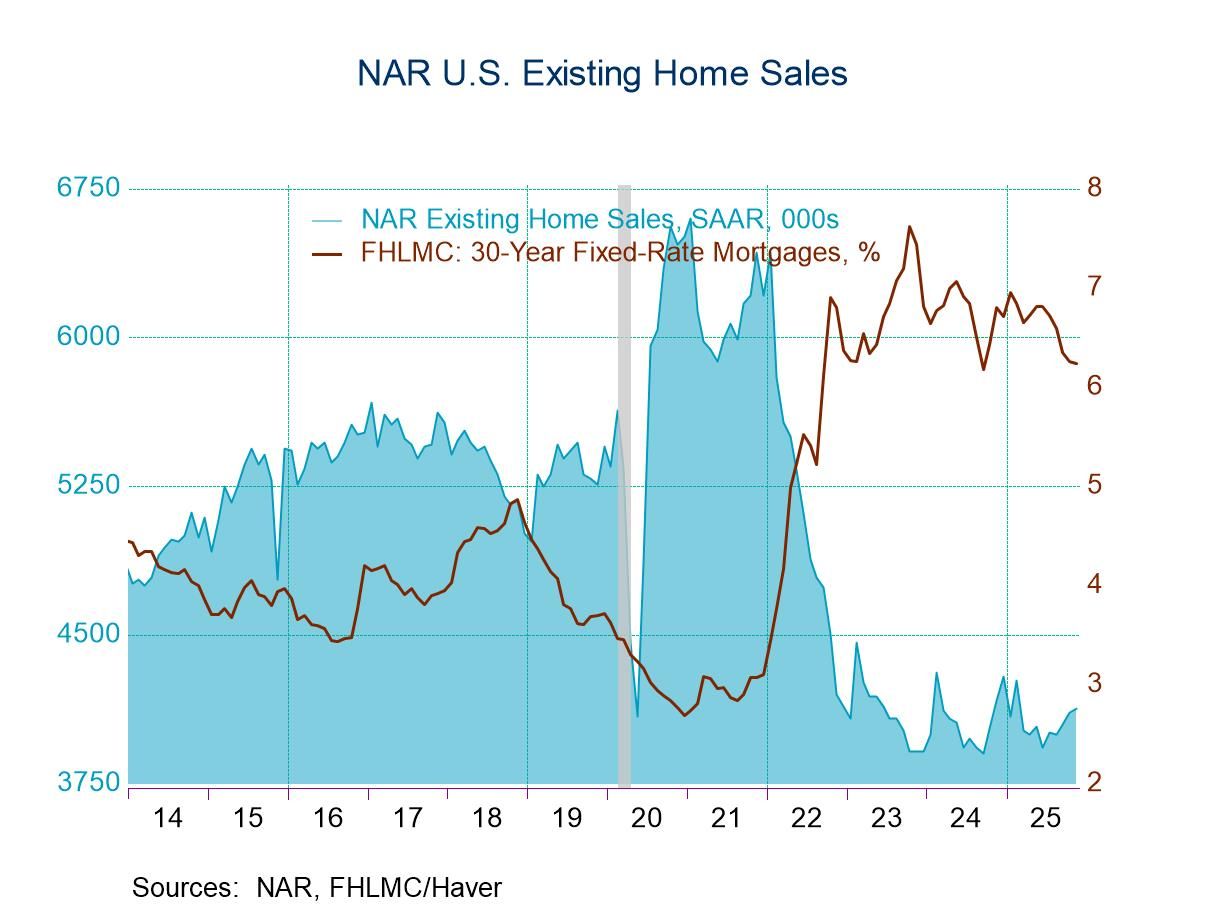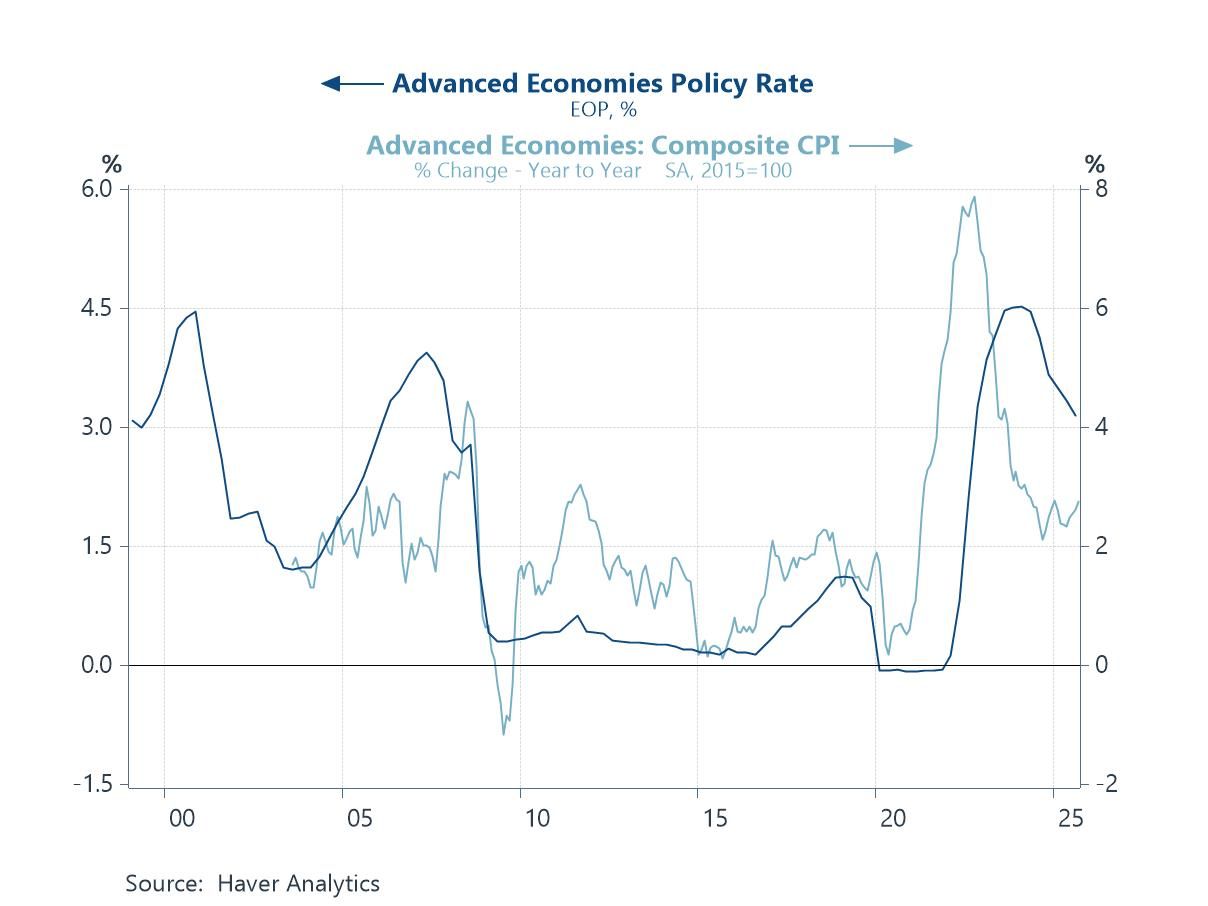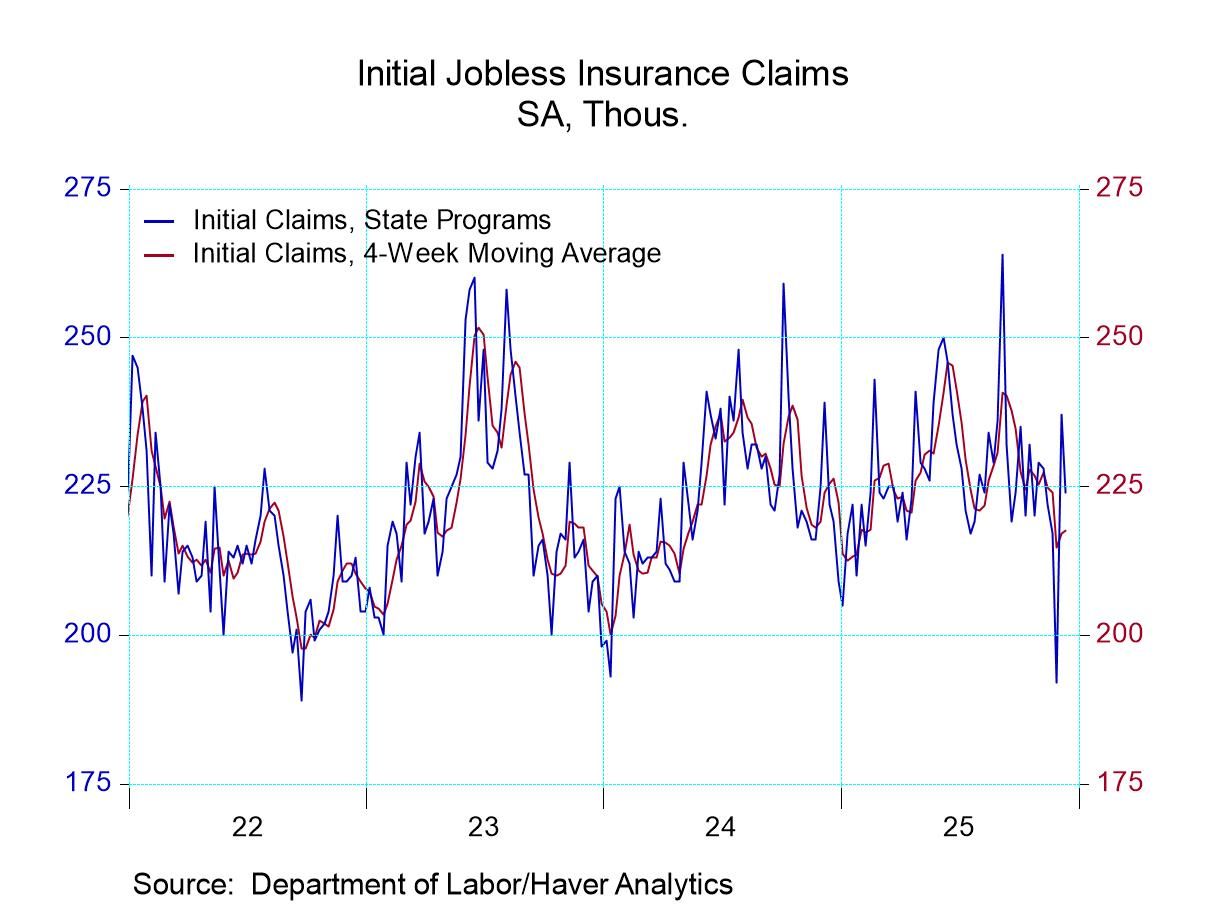U.S. Existing Home Sales Continue to Fall in April as Houses Become Less Affordable
Summary
- Sales post their third consecutive decline.
- Median home price hits record level.
- Higher prices and mortgage rates are driving down affordability.


Existing home sales declined 2.4% (-5.9% y/y) during April to 5.61 million (SAAR) from 5.75 million in March, revised from 5.77 million. It was the lowest level of sales since June 2020 according to the National Association of Realtors (NAR). The Action Economics Forecast Survey expected a smaller decline in sales to 5.65 million units in April.
The fall in existing home sales included a 2.5% decline (-4.8% y/y) in single-family home sales to 4.99 million, a 22-month low, from 5.12 million in March. In fact, single-family home sales have reversed all of their post-pandemic gains. Sales of condos and co-ops weakened 1.6% (-13.9% y/y) to 620,000, the lowest level since July 2020.
Home sales in all regions of the country have deteriorated in the past three months from their recent highs. Sales in the South were off 4.6% to 2.49 million in April, down 15.3% from January. In the West, sales fell 5.8% in April to 1.14 million, down 10.2% from January. Although existing home sales in the Northeast ticked up 1.5% to 670,000, these sales were down 14.1% from January. Likewise, sales in the Midwest increased 3.2% to 1.31 million, but were nevertheless down 12.7% from January.
The number of existing homes on the market rose 10.8% to 1.03 million (NSA) for seasonal reasons. On a y/y basis, which eliminates much of the seasonality, the supply of homes on the market was 10.4% lower. The supply of homes on the market remains extremely low at 2.2 months at the current selling rate. For comparison, the months' supply hovered around 4.0 in the years prior to the pandemic. Looking at month-by-month comparisons over the years, the supply of homes have been at their lowest levels on record all year. These figures date back to January 1999.
The median price of an existing home increased 4.4% (14.8% y/y) to a record $391,200 last month, with gains in all major regions. The average price of an existing home rose 2.9% (9.2% y/y) to $397,600 in April. The price data are not seasonally adjusted.
The combination of soaring home prices across the nation and rising interest rates is making homes less affordable. According to the NAR, housing affordability has fallen sharply in recent months. As a result, NAR calculates that the qualifying income for a new home has increased by 20.9% since the start of the year to $72,096. The decline in affordability is one reason for the recent sharp drop in existing home sales.
The data on existing home sales, prices and affordability are compiled by the National Association of Realtors. The data on single-family home sales extend back to February 1968. Total sales and price data and regional sales can be found in Haver's USECON database. Regional price and affordability data and national inventory data are available in the REALTOR database. The expectations figure is from the Action Economics Forecast Survey, reported in the AS1REPNA database.


Peter D'Antonio
AuthorMore in Author Profile »Peter started working for Haver Analytics in 2016. He worked for nearly 30 years as an Economist on Wall Street, most recently as the Head of US Economic Forecasting at Citigroup, where he advised the trading and sales businesses in the Capital Markets. He built an extensive Excel system, which he used to forecast all major high-frequency statistics and a longer-term macroeconomic outlook. Peter also advised key clients, including hedge funds, pension funds, asset managers, Fortune 500 corporations, governments, and central banks, on US economic developments and markets. He wrote over 1,000 articles for Citigroup publications. In recent years, Peter shifted his career focus to teaching. He teaches Economics and Business at the Molloy College School of Business in Rockville Centre, NY. He developed Molloy’s Economics Major and Minor and created many of the courses. Peter has written numerous peer-reviewed journal articles that focus on the accuracy and interpretation of economic data. He has also taught at the NYU Stern School of Business. Peter was awarded the New York Forecasters Club Forecast Prize for most accurate economic forecast in 2007, 2018, and 2020. Peter D’Antonio earned his BA in Economics from Princeton University and his MA and PhD from the University of Pennsylvania, where he specialized in Macroeconomics and Finance.





 Global
Global
